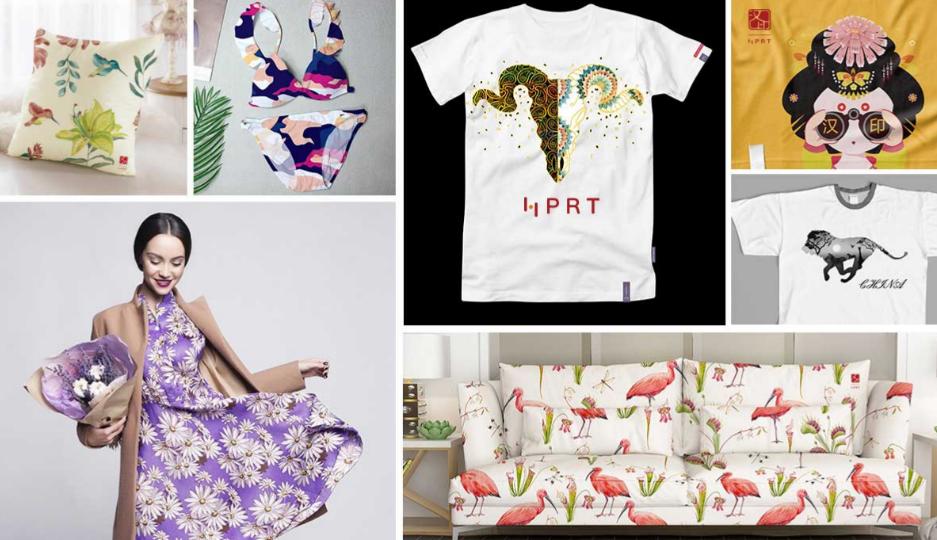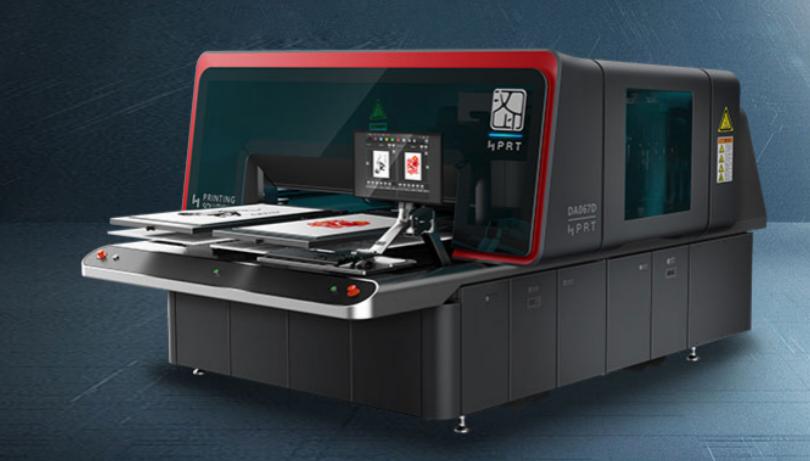Understand Digital Textile Printing: History, Pros & Cons

What is digital textile printing
Textile printing is the process of applying designs or patterns to fabrics by transferring a printing design onto a fabric using various methods such as digital printing, direct printing, transfer printing of polyester fabric, discharge printing, resist printing, special printing, and others.
Among all the methods above, digital textile printing is the process of printing designs onto fabric using digital technology and realized by using a digital textile printer to apply ink directly onto the fabric surface, creating high-quality images and patterns. The ink is then heat-set to bond with the fabric, creating a durable and long-lasting printing work.
History of digital textile printing
In 1995, the wide-format digital textile printing machine with a speed of 5㎡/h or less was popularized and applied in Europe.
In 2003, low-speed and small batches digital textile printers appeared.
In 2007, digital textile printers had moderate printing speed, and could basically meet production needs, but were still not enough for mass production.
In 2011, high-speed digital textile printers that supported mass production appeared in the market.
In 2015, single-pass began to rise, and the printing speed reached 70 meters per minute.
Advantages of digital textile printing
1.Environment-friendly
Digital textile printing is drop-on-demand, which can reduce the waste of chemicals. Compared with traditional printing, it saves the amount of dyeing and chemical materials by 20%~30%, saves water by 20%-30%, and saves steam by 10%-15%.
2.Higher printing quality
At present, the resolution of digital printing is as high as 2880 dpi, while the resolution of the traditional printing process is only 255 dpi. Higher resolution means the images and patterns printed are more detailed and vibrant.
3.Flexible in batches
Digital textile printing supports small-batch production. A digital textile printer is more flexible regarding printing quantity. You can print one item without putting endless effort into color separation, drafting, plate making, and other processes. The production batch is not limited. And the setup time is much shorter.
4.Wide printing material choices
Digital textile printers can print on a wide range of fabrics, including silk, cotton, linen, wool, bamboo fiber, polyester and other natural or artificial fiber fabrics.

Disadvantages of digital textile printing
1.Higher upfront costs for equipment and ink.
Digital textile printing requires specialized equipment and high-quality ink, which needs high costs to purchase and maintain. This can be a significant investment for small businesses or those just start out.
2.Lower color accuracy
The digital printing is CMYK mixed color printing. All colors are made by mixing four-color ink. While digital printing technology has improved significantly in recent years, it can still be difficult to achieve the same level of color accuracy as traditional printing methods. This is particularly true when printing on certain types of fabrics or materials.
HPRT is a professional manufacturer of industrial digital textile printers, providing pre-sale consultation, in-sale debugging, after-sales service and software support to global customers. Contact us for a quote or apply to be our certified distributors.









